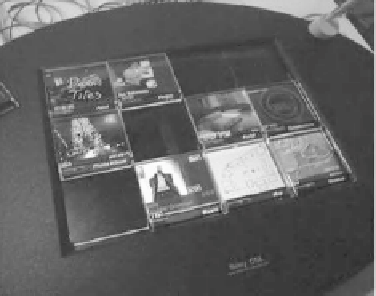Information Technology Reference
In-Depth Information
Webpage (for example, the input for the field of a form). He can replay these actions
and publish them on a wiki to share them with members of his community (who can
then reuse the pre-filled in forms) [LIT 07].
Works on the programming of ambient spaces by the final user are still in the
early stages. In Speakeasy, the user can build queries for searching interaction
resources (devices, services, etc.), filtering them based on the specification of the
type of information they provide, with the objective of combining these resources in
ways that had not been anticipated by the developers of the system [NEW 02]. With
Jigsaw, users build simple programs by assembling pieces of a puzzle, such as “if
someone rings the doorbell, take a photo and transfer it to the PDA” [ROD 04]; see
Figure 11.6a. It seems to be possible to extrapolate this principle to the world of
transport or mobility, with assemblies such as: “provide a warning when passing an
interesting site; take photos and send them to grandpa and grandma so that they can
follow the journeys of their grandchild(ren) almost in real time”. This extrapolation
is broader than the adaptation to interaction resources: it also adapts to informational
content.
Figure 11.6.
Two examples of programming by the end-user:
a) Jigsaw [ROD 04]; and b) DataTiles [REK 01]














